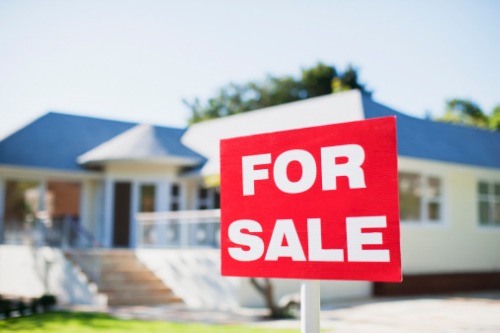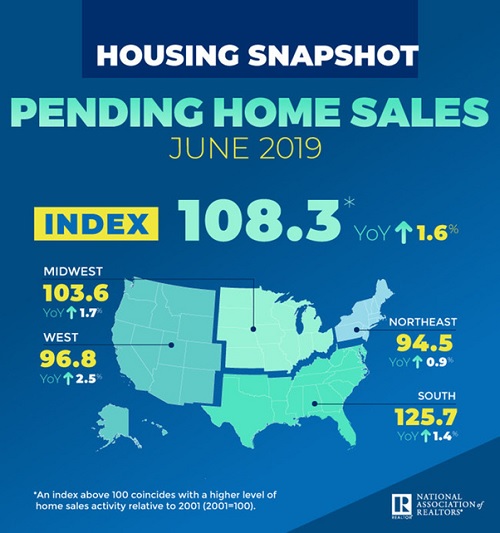Contract signings subdued by lack of supply, led by the West

The recent rise in existing home sales was snapped in July as the West led declines for the four major US regions.
The National Association of Realtors reported that its Pending Home Sales Index was down 2.5% from the previous month, with a reading of 105.6. The index was down 0.3% year-over-year.
"Super-low mortgage rates have not yet consistently pulled buyers back into the market," said Lawrence Yun, NAR chief economist. "Economic uncertainty is no doubt holding back some potential demand, but what is desperately needed is more supply of moderately priced homes."
Yun is predicting that interest rates will remain low with trade uncertainty weighing on GDP with 2% in 2019 and 1.6% in 2020.
Tight inventory will continue to impact pending sales and median home prices and while home sales will likely see a short term boost from lower mortgage rates, existing home sales are likely to be flat at 5.34 million in 2019 given the level of sales in the first seven months of the year.
The median price of existing home sales will continue increasing, but at a slower pace of 4% in 2019, to $269,000, and 3% in 2020, to $278,500, Yun expects.
The housing market would certainly benefit from increased supply but Yun also highlights another benefit.
"A boost to home building would greatly improve economic growth," he said. "More free market prices on construction materials without government interference about where homebuilders have to get their supply will also help produce more and grow the economy. The housing industry cannot grow without more supply."
Pending sales by region
The Pending Home Sales Index for July shows that sales in:
- the Northeast fell 1.6% to 93.0 in July and is now 0.9% lower than a year ago;
- the Midwest, the index dropped 2.5% to 101.0 in July, 1.2% less than July 2018;
- the South decreased 2.4% to an index of 122.7 in July, but that number is 0.1% higher than last July;
- the West declined 3.4% in July to 93.5 but still increased 0.3% above a year ago.




